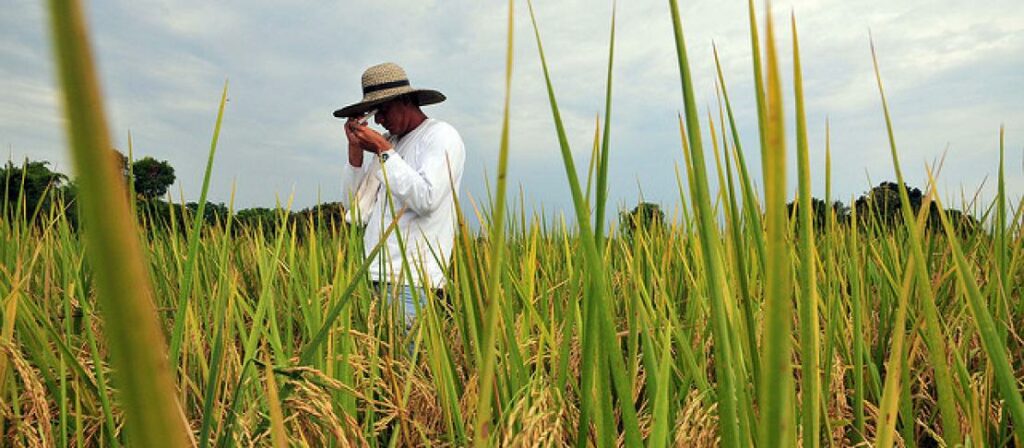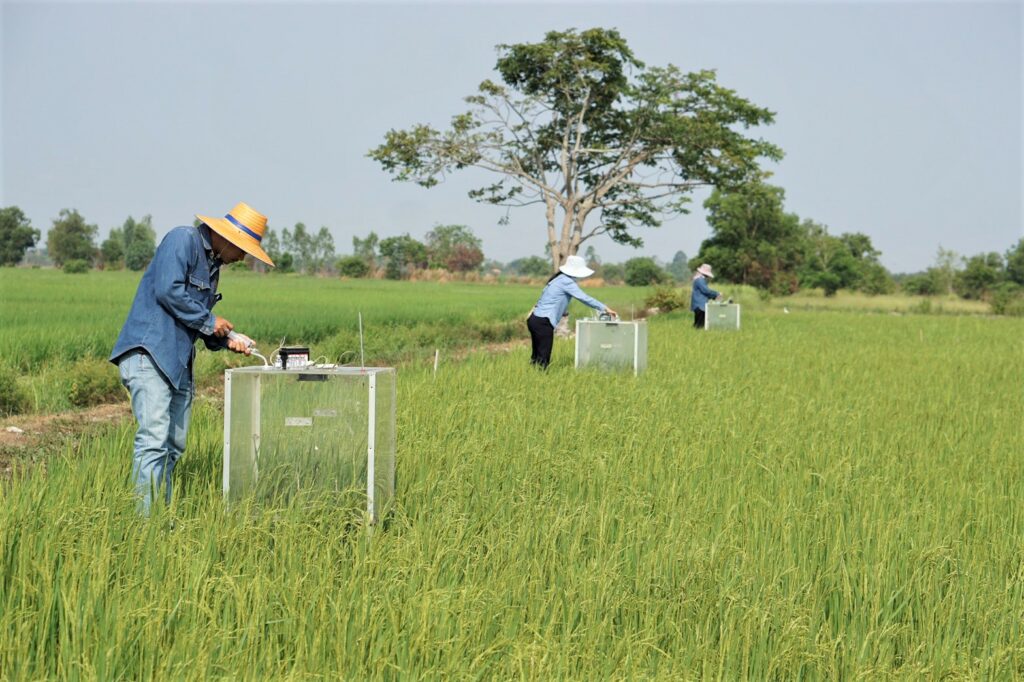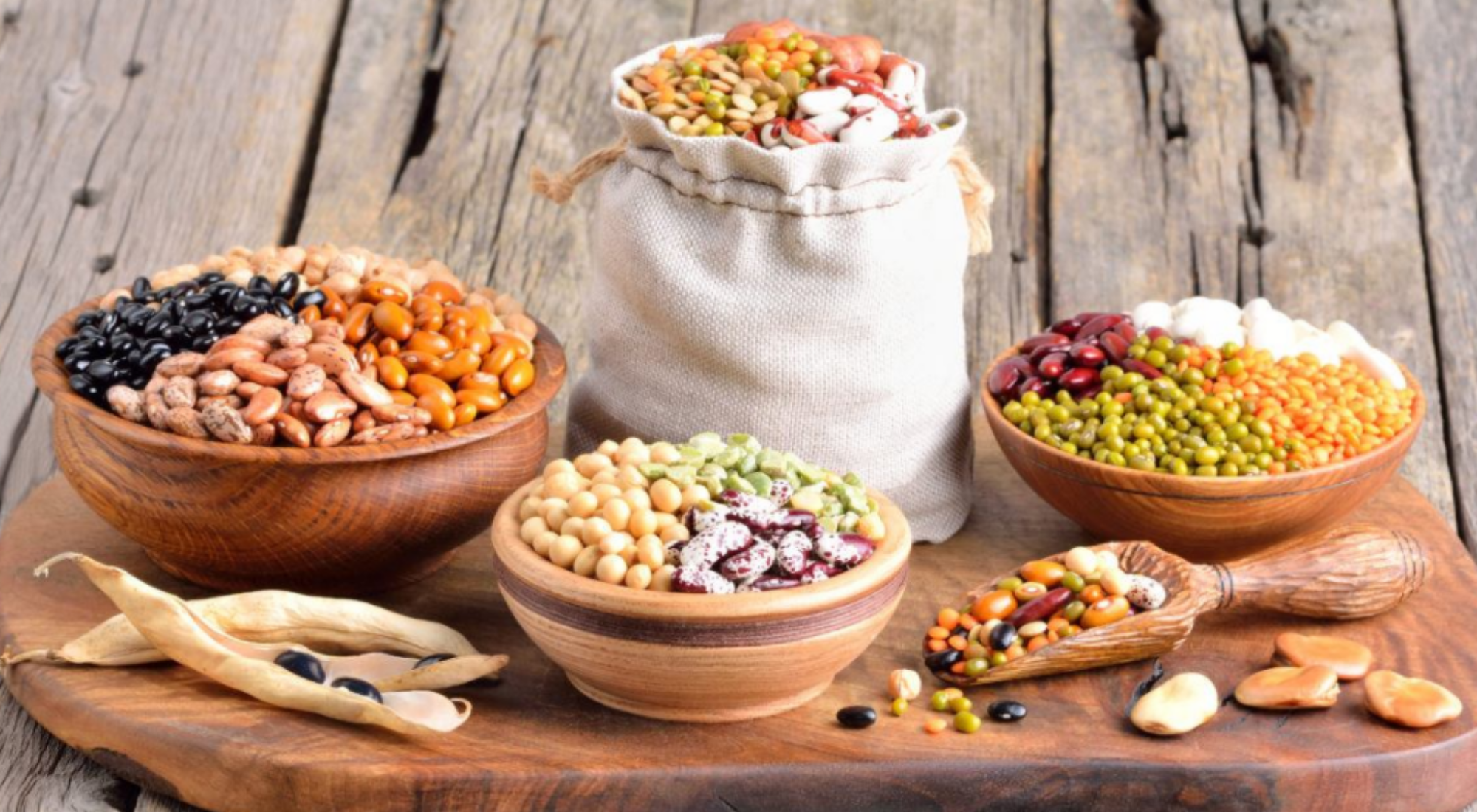During the summer, I had the chance to work with the International Rice Research Institute (IRRI) offices in Los Banos, Philippines, on genetically breeding rice varieties with low CH4 and nitrous oxide (N2O) emissions. The goal was to contribute in reducing the amount of greenhouse gases (GHG) released into the atmosphere.
Background
Rice production is a major source of GHG emissions. The Intergovernmental Panel on Climate Change (IPCC) estimates that rice production is responsible for about 55% of the total GHG emissions from agricultural soils (Nicholaisen et al., 2021). Because rising temperatures are expected to cause rice fields to emit more GHGs in the future, drastic changes are required to grow rice in a way that minimises environmental damage while improving food security. It is important to breed rice varieties with high yields and low GHG emissions if we want to make more food and have less of an effect on the climate.

Methodology
The study used a randomised complete block design (RCB) experiment, a manual closed chamber approach and gas chromatography for CH4 and N2O gas sample analysis.

Through my research, I learned about advanced methods used in plant breeding for managing and analysing plants. It also helped me get in touch with world-famous research institution and scientists who study the genetics of rice.
Acknowledgements: Gratitude is extended to:
- The International Rice Research Institute (IRRI)
- Research supervisors: Prof. Charles Spillane, Dr. Peter C. McKeown, Dr. Björn Ole Sander, Dr. Reiner Wassmann, and Mr. Noel Ndlovu
- The Plant & AgriBiosciences Research Centre (Ryan Institute)
- Funding: Irish Aid Fellowship to Tinashe Mashizha
